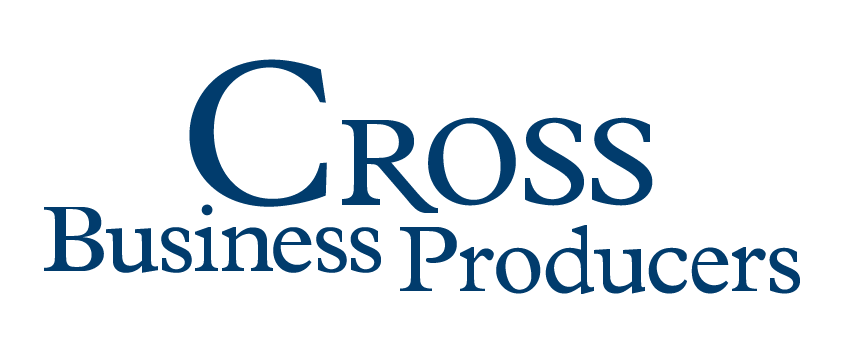南米の美容レーザー市場展望、2030年South America Cosmetic Laser Market Outlook, 2030 南米の美容レーザー市場は、進化する美容トレンド、レーザー治療へのアクセスの増加、非侵襲的皮膚科学技術の進歩に牽引され、世界の美容業界で認知度を高めている。同市場は地理的に多様であり、主要都市中心部... もっと見る
サマリー南米の美容レーザー市場は、進化する美容トレンド、レーザー治療へのアクセスの増加、非侵襲的皮膚科学技術の進歩に牽引され、世界の美容業界で認知度を高めている。同市場は地理的に多様であり、主要都市中心部ではレーザーを用いた施術の高い導入率が見られる一方、発展途上地域では美容医療が徐々に医療・美容分野に組み込まれている。南米諸国の中には、主に北米や欧州からハイエンドの美容レーザー機器を輸入することに注力している国もあれば、美容医療機器の現地製造能力を開発している国もある。ブラジルは、美容レーザー治療の主要な消費国として際立っており、レーザーを使った幅広い施術を提供する皮膚科クリニック、美容センター、メディカル・スパの強力なネットワークに支えられている。病院も美容レーザー技術を皮膚科治療に取り入れており、家庭用レーザー機器の増加で治療がより身近になっている。永久減毛のためのダイオードレーザー、皮膚リサーフェシングのためのフラクショナルレーザー、より速いタトゥー除去のためのピコ秒レーザーを含む技術の進歩が市場成長を形成している。南米における美容レーザーの規制要件は様々で、ブラジルのANVISAはリスクの高いレーザー(クラスIII/IV)にはRegistro de Produtoを、リスクの低い装置(クラスI/II)にはCadastro de Produtoを通して厳格な管理を実施しています。クリニックはまた、安全基準の遵守を保証するためにCertificação de Boas Práticas (CBPF)を取得しなければならない。アルゼンチンのANMATは、Registro Nacional de Establecimientos (RNE)によるクリニックのライセンスとともに、外科用レーザーのCertificado de Producto Médico (CPM)を義務付けている。コロンビアのINVIMAは、すべての医療レーザーにRegistro Sanitarioを、侵襲的処置にはCertificación de Buenas Prácticas Clínicasを要求しています。MERCOSUR GMC Resolution 15/2011は地域的な調和を試みているが、一貫性のない採択に直面している。ISO13485への適合は製造業者にとって極めて重要であり、ブラジルでは市販後調査が義務付けられている。アルゼンチンの輸入規制のような経済的課題は、ハイエンドの美容レーザーの市場アクセスをさらに複雑にしている。Bonafide Research社の調査レポート「南米の美容レーザ市場の展望、2030年」によると、南米の美容レーザ市場は2025年から2030年にかけて13.83%以上のCAGRで成長すると予測されている。この拡大は、レーザーシステムの技術的進歩によって推進され、治療効果と患者の満足度を高める。主な開発には、インテンスパルスライト(IPL)技術とエルビウムレーザーの統合が含まれ、皮膚のリサーフェシングや脱毛などの処置に非侵襲的なソリューションを提供している。地域的には、市場は広範囲に及び、ブラジル、アルゼンチン、コロンビアのような国では、美容治療に対する需要の高まりによって大きな消費がある。南米には、ブラジルの地元企業を含む美容レーザー機器メーカーが数社あるが、同地域はまた、高まる需要を満たすために高度なレーザー機器を供給するLumenisやCynosureのような世界的リーダーからの輸入に大きく依存している。中流階級の人口増加、可処分所得の増加、美と美学を重視する文化が非侵襲的な美容施術の需要を促進しており、南米の美容レーザー市場の機会は大きい。さらに、この地域内での医療ツーリズムの拡大は、患者が手頃な価格で高品質の美容治療を求めるため、さらなる成長の見通しを示している。メルコスールGMC決議15/2011は、ブラジル、アルゼンチン、コロンビアを含む加盟国全体で医療機器規制を標準化することを目的としている。しかし、実施状況は様々で、ブラジルは完全に実施しているが、アルゼンチンは遅れている。ISO13485認証は、メーカーが品質管理基準を確実に遵守するために不可欠である。さらに、ブラジルは副作用を追跡するために市販後調査を実施している。アルゼンチンの厳しい輸入規制は、さらにコストを上昇させ、高度な美容レーザーへのアクセスを制限している。 市場促進要因 - 美の基準やソーシャルメディアトレンドの影響力の増大:ソーシャルメディアのインフルエンサー、有名人、美容ブロガーの影響力の高まりは、南米における美の理想を大きく形成している。多くの人々が現代の美容トレンドに合わせて、肌の若返り、脱毛、アンチエイジングのためのレーザー治療を求めている。インスタグラムやTikTokのようなプラットフォームは、美容施術をより身近なものにし、より多くの人々に美容レーザーの選択肢を探るよう促している。 - 手頃な価格でレーザー治療を提供する皮膚科クリニックの増加:サンパウロ、ブエノスアイレス、サンティアゴのような大都市では、皮膚科や美容クリニックが急増しており、美容レーザー治療がより広く利用できるようになっている。競争力のある価格設定と分割払いオプションは、中間所得層の消費者がレーザー治療を選ぶことをさらに後押ししている。技術の進歩に伴い、クリニックもより費用対効果の高いソリューションを採用するようになり、より多くの人々が高品質の治療にアクセスできるようになっている。 市場の課題 - 美容施術への消費支出に影響する経済の不安定さ:アルゼンチンやブラジルのような国の景気変動は、裁量支出に影響を与えることが多く、美容レーザー施術のような非必須治療に対する需要の鈍化につながる。通貨切り下げやインフレは多くの潜在顧客の値ごろ感を低下させ、一部のクリニックは顧客獲得のために価格の引き下げやプロモーション割引の提供を余儀なくされる。 - 美容レーザー治療の保険適用が限られている:南米の保険プランのほとんどは、レーザー治療を含む選択的美容施術をカバーしていない。これは、消費者がサービスのために自己負担しなければならないことを意味し、多くの人にとって経済的負担となりうる。高価なレーザー技術は利用しやすさをさらに制限し、クリニックにとっても患者にとっても、手頃な価格が重要な関心事となっている。 市場動向 - ボディコンティング・レーザー施術の人気の高まり:レーザー技術を使った非侵襲的な脂肪減少や肌の引き締め施術に対する需要が南米で高まっている。ボディーエステに対する意識の高まりに伴い、レーザー脂肪分解や高周波を利用した輪郭形成などの施術が、特にフィットネスや美容トレンドの影響が大きい都市部で一般的になっている。 - 費用対効果の高い治療のための携帯型多機能レーザー機器の採用:現在、多くのクリニックが、脱毛、肌のリサーフェイシング、傷跡の軽減など、複数の治療が可能な小型の多目的レーザー機器に投資している。こうした機器は運営コストを削減し、治療効率を向上させるため、小規模のクリニックでも高価な機器を複数導入することなく、幅広いサービスを提供することができる。 皮膚リサーフェシングと瘢痕修正治療の需要の増加が切除型レーザーの成長を促進している。 深いしわ、にきび跡、色素沈着に対する効果的な解決策を求める人が増えるにつれて、アブレイティブレーザーは南米で人気が高まっている。この地域は、日焼け、老化、にきびによる皮膚疾患の発生率が高く、皮膚リサーフェシング治療の需要を高めている。炭酸ガス(CO₂)やエルビウム・レーザーなどのアブレイティブ・レーザーは、皮膚の外層を除去し、コラーゲンの生成と新しい細胞の成長を促進する。これらの治療法は効果が長持ちするため、表面的な美容整形よりも好まれている。ブラジルやコロンビアのような国々における医療ツーリズム産業の成長も、高度なレーザー治療に対する需要の高まりに貢献している。多くの外国人患者が、高品質で手頃な価格の美容施術を求めて南米を訪れ、切除レーザー市場をさらに押し上げている。さらに、レーザー技術の進歩により、これらの処置はより安全で正確になり、ダウンタイムや副作用が減少している。特にブラジルのANVISAによる規制認可も市場拡大に一役買っており、これらの機器が厳しい安全基準を満たしていることを保証している。さらに、中間層の可処分所得の増加により、ハイエンドの美容施術がより身近なものとなり、ソーシャルメディアのトレンドや美容基準が引き続き効果的な皮膚治療への需要を押し上げている。医師や皮膚科医は、肌の大幅な改善を求める患者の長期的な解決策として切除レーザー治療を推奨するようになってきている。 長期的な脱毛ソリューションへの強い嗜好が、レーザー脱毛治療の需要を促進している。 レーザー脱毛は、南米の美容基準と気候により、南米で最も求められている美容施術の一つである。多くの国では年間を通して気温が高く、人々は肌を露出する衣服を頻繁に着用するため、ムダ毛のない滑らかな肌への需要が高まっている。ワックスや髭剃りのような従来の脱毛方法は時間がかかり、炎症を引き起こす可能性があるため、人々はより永久的な代替手段を求めるようになっている。ダイオードやNd:YAGレーザー技術の進歩により、レーザー脱毛は、南米で一般的な浅黒い肌色を含む、様々な肌色に効果的になりました。また、多くの人が、レーザー治療が予防に役立つ、巻き毛やカミソリ負けなどの問題を経験している。サンパウロ、ブエノスアイレス、ボゴタなどの主要都市にあるクリニックやエステティックセンターは、レーザー脱毛をより身近で手頃なものにし、サービスを拡大している。さらに、中産階級が増加し、可処分所得水準が上昇したことで、より多くの個人が利便性と長期的な結果を求めて美容施術に投資するようになった。ソーシャルメディアと美容インフルエンサーの影響力は、レーザー脱毛をさらに正常化し、主流の美容治療にしている。技術の進歩により、施術はより短時間で痛みも少なくなり、一時的な代用品よりも専門的なレーザー治療を選ぶ人が増えている。さらに、この治療は女性に限らず、胸、背中、ひげの生え際などの部位のレーザー脱毛を希望する男性も増えている。 病院は、その専門知識、技術、患者の信頼により、高度な美容レーザー治療の主要な提供者となっている。 南米では、病院は専門的な専門知識と最新のレーザー技術へのアクセスを提供するため、美容レーザー市場で重要な役割を果たしている。多くの美容および皮膚科処置は、高度な訓練を受けた専門家と厳格な安全プロトコルを必要とするため、病院は高度な処置のための好ましい選択肢となっている。皮膚のリサーフェシング、瘢痕の修正、血管病変の除去などの処置には、複雑なレーザー・アプリケーションが必要であり、病院が提供できる医学的監督が必要である。美容クリニックとは異なり、病院は多くの場合、選択的な美容治療と、術後の瘢痕管理や火傷治療を含む医療皮膚科症例の両方を扱うインフラを備えている。ブラジル、アルゼンチン、コロンビアには、美容・再建施術を専門とする最も確立された病院ネットワークがあり、地域内外から患者を集めている。さらに、病院は最先端のレーザー・システムに投資する傾向が強く、高い精度と効果的な結果を保証している。また、多くの病院が研究機関と協力し、美容レーザー技術の進歩に貢献し、その安全な使用法について医療専門家のトレーニングを行っている。患者は、提供される治療の質に自信を持つことができるため、切除レーザーや体の輪郭治療を含む処置のために病院を好むことが多い。ブラジルのような国の規制要件は、安全性と衛生基準の厳格な遵守を義務付けており、病院はそれを満たすための十分な設備が整っています。さらに、病院が提供する保険や融資のオプションにより、ハイエンドのレーザー治療がより幅広い人々に利用しやすくなっている。 ブラジルは、その強力な医療美容産業と美容処置に対する高い需要により、美容レーザー市場を支配している。 ブラジルは世界で最も進んだ美容整形産業の1つであり、南米の美容レーザー市場をリードしている。同国は、美意識の高い消費者と美容強化の強い文化に後押しされ、美容施術の需要が高い。サンパウロやリオデジャネイロのような都市は美容治療の世界的な拠点であり、南米内外から患者を集めている。国際的に認知された皮膚科医や形成外科医が存在することも、同市場におけるブラジルの地位をさらに強固なものにしている。さらに、ANVISAが管理するブラジルの規制枠組みは、美容レーザー機器の安全性と有効性を保証し、レーザー治療に対する消費者の信頼を高めている。また、最新のレーザー技術を備えた皮膚科専門クリニック、メディカル・スパ、病院の数も増加している。ブラジルは、北米や欧州に比べて手頃な料金で高品質の美容施術を提供しているため、医療ツーリズムも重要な要因となっている。技術の進歩とレーザー機器の現地生産が市場拡大に寄与し、治療がより身近なものとなっている。中産階級人口の増加と可処分所得水準の上昇も、非侵襲的・低侵襲的美容施術の需要を煽っている。ソーシャルメディアの影響と美の基準が大きな役割を果たしており、多くのブラジル人がレーザー脱毛、皮膚リサーフェシング、ボディコントゥアリングなどの施術を選んで希望の外見を実現している。さらに、皮膚科医や美容施術家のための専門的なトレーニングプログラムが熟練した労働力を確保し、市場成長をさらに促進している。 本レポートの考察 - 歴史的年:2019年 - 基準年2024 - 推定年2025 - 予測年2030 本レポートの対象分野 - 化粧品用レーザー市場の価値とセグメント別予測 - 様々な促進要因と課題 - 進行中のトレンドと開発 - 注目企業 - 戦略的提言 タイプ別 - アブレイティブレーザー - 非アブレイティブレーザー 用途別 - 脱毛 - 皮膚表面処理 - 血管病変 - 傷跡・ニキビ除去 - 輪郭形成 - その他 エンドユーザー別 - 病院 - 皮膚科クリニック - メディカル・スパ レポートのアプローチ 本レポートは、一次調査と二次調査を組み合わせたアプローチで構成されている。はじめに、市場を理解し、市場に存在する企業をリストアップするために二次調査が使用された。二次調査は、プレスリリース、企業の年次報告書、政府が作成した報告書やデータベースの分析などの第三者情報源からなる。二次ソースからデータを収集した後、一次調査は、市場がどのように機能しているかについて主要なプレーヤーと電話インタビューを行い、市場のディーラーやディストリビューターと取引を行いました。その後、消費者を地域別、階層別、年齢層別、性別に均等にセグメンテーションし、一次調査を開始した。一次データを入手した後は、二次ソースから入手した詳細の検証を開始した。 対象読者 本レポートは、業界コンサルタント、メーカー、サプライヤー、農業関連団体・組織、政府機関、その他のステークホルダーが市場中心の戦略を立てる際に役立ちます。マーケティングやプレゼンテーションに加え、業界に関する競合知識を高めることもできます。 ***注:ご注文確認後、レポートのお届けまで48時間(2営業日)かかります。 目次目次1.要旨 2.市場ダイナミクス 2.1.市場促進要因と機会 2.2.市場の阻害要因と課題 2.3.市場動向 2.3.1.XXXX 2.3.2.XXXX 2.3.3.XXXX 2.3.4.XXXX 2.3.5.XXXX 2.4.サプライチェーン分析 2.5.政策と規制の枠組み 2.6.業界専門家の見解 3.調査方法 3.1.二次調査 3.2.一次データ収集 3.3.市場形成と検証 3.4.レポート作成、品質チェック、納品 4.市場構造 4.1.市場への配慮 4.2.前提条件 4.3.制限事項 4.4.略語 4.5.出典 4.6.定義 5.経済・人口統計 6.南米の美容レーザー市場展望 6.1.金額別市場規模 6.2.国別市場シェア 6.3.市場規模および予測、タイプ別 6.4.市場規模・予測:用途別 6.5.市場規模・予測:エンドユーザー別 6.6.ブラジルの美容レーザー市場展望 6.6.1.金額別市場規模 6.6.2.タイプ別市場規模・予測 6.6.3.用途別市場規模・予測 6.6.4.エンドユーザー別市場規模・予測 6.7.アルゼンチンの美容レーザー市場展望 6.7.1.金額別市場規模 6.7.2.タイプ別市場規模・予測 6.7.3.用途別市場規模・予測 6.7.4.エンドユーザー別市場規模・予測 6.8.コロンビアの美容レーザー市場展望 6.8.1.金額別市場規模 6.8.2.タイプ別市場規模・予測 6.8.3.用途別市場規模・予測 6.8.4.エンドユーザー別市場規模・予測 7.競争環境 7.1.競合ダッシュボード 7.2.主要企業の事業戦略 7.3.主要プレーヤーの市場シェアの洞察と分析、2024年 7.4.主要プレーヤーの市場ポジショニングマトリックス 7.5.ポーターの5つの力 7.6.企業プロフィール 7.6.1.アルマ・レーザー 7.6.1.1.会社概要 7.6.1.2.会社概要 7.6.1.3.財務ハイライト 7.6.1.4.地理的洞察 7.6.1.5.事業セグメントと業績 7.6.1.6.製品ポートフォリオ 7.6.1.7.主要役員 7.6.1.8.戦略的な動きと展開 7.6.2.El.En.S.p.A. 7.6.3.イリデックス・コーポレーション 8.戦略的提言 9.付録 9.1.よくある質問 9.2.注意事項 9.3.関連レポート 10.免責事項 図表一覧 図1:美容レーザーの世界市場規模(10億ドル)、地域別、2024年・2030年 図2: 市場魅力度指数(2030年地域別) 図3:市場魅力度指数(2030年セグメント別 図4:南米の美容レーザー市場規模:金額(2019年、2024年、2030F)(単位:億米ドル) 図5:南米の美容レーザー市場国別シェア(2024年) 図6:ブラジルの美容レーザー市場規模:金額(2019年、2024年、2030F)(単位:億米ドル) 図7:アルゼンチンの美容レーザー市場規模:金額(2019年、2024年、2030F) (単位:億米ドル) 図8:コロンビアの美容レーザー市場規模:金額(2019年、2024年&2030F)(単位:億米ドル) 図9:美容レーザーの世界市場におけるポーターの5つの力 表一覧 表1:美容レーザーの世界市場スナップショット、セグメント別(2024年・2030年)(単位:億米ドル) 表2:美容レーザー市場の影響因子(2024年 表3:上位10カ国の経済スナップショット(2022年 表4:その他の主要国の経済スナップショット(2022年 表5:外国通貨から米ドルへの平均為替レート 表6:南米の美容レーザー市場規模・タイプ別予測(2019年~2030F)(単位:億米ドル) 表7:南米の美容レーザー市場規模・予測:用途別(2019~2030F)(単位:億米ドル) 表8:南米の美容レーザー市場規模・予測:エンドユーザー別(2019~2030F) (単位:億米ドル) 表9:ブラジルの美容レーザー市場規模・予測:タイプ別(2019~2030F) (単位:億米ドル) 表10:ブラジルの美容レーザー市場規模・用途別予測(2019~2030F) (単位:億米ドル) 表11:ブラジル美容レーザー市場規模・予測:エンドユーザー別(2019~2030F) (単位:億米ドル) 表12:アルゼンチンの美容レーザー市場規模・予測:タイプ別(2019~2030F) (単位:億米ドル) 表13:アルゼンチンの美容レーザー市場規模・用途別予測(2019~2030F) (単位:億米ドル) 表14:アルゼンチンの美容レーザー市場規模・予測:エンドユーザー別(2019~2030F) (単位:USD Billion) 表15:コロンビアの美容レーザー市場規模・予測:タイプ別(2019~2030F) (単位:億米ドル) 表16:コロンビアの美容レーザー市場規模・用途別予測(2019~2030F) (単位:億米ドル) 表17:コロンビアの美容レーザー市場規模・予測:エンドユーザー別(2019~2030F) (単位:億米ドル) 表18:上位5社の競争ダッシュボード(2024年
SummaryThe South America cosmetic laser market has gained recognition in the global aesthetic industry, driven by evolving beauty trends, increasing accessibility to laser treatments, and advancements in non-invasive dermatological technologies. The market is geographically diverse, with major urban centers witnessing high adoption rates of laser-based procedures, while developing regions are gradually integrating aesthetic treatments into medical and beauty sectors. Some South American countries focus on importing high-end cosmetic laser equipment, primarily from North America and Europe, while others are developing local manufacturing capabilities for aesthetic medical devices. Brazil stands out as a leading consumer of cosmetic laser treatments, supported by a strong network of dermatology clinics, beauty centers, and medical spas offering a wide range of laser-based procedures. Hospitals are also incorporating cosmetic laser technology for dermatological care, while an increasing number of home-use laser devices are making treatments more accessible. Technological advancements, including diode lasers for permanent hair reduction, fractional lasers for skin resurfacing, and picosecond lasers for faster tattoo removal, are shaping market growth. Regulatory requirements for cosmetic lasers in South America vary, with Brazil’s ANVISA enforcing strict controls through Registro de Produto for high-risk lasers (Class III/IV) and Cadastro de Produto for low-risk devices (Class I/II). Clinics must also obtain a Certificação de Boas Práticas (CBPF) to ensure compliance with safety standards. Argentina’s ANMAT mandates a Certificado de Producto Médico (CPM) for surgical lasers, along with clinic licensing via Registro Nacional de Establecimientos (RNE). Colombia’s INVIMA requires Registro Sanitario for all medical lasers and Certificación de Buenas Prácticas Clínicas for invasive procedures. MERCOSUR GMC Resolution 15/2011 attempts regional harmonization but faces inconsistent adoption. Compliance with ISO 13485 is crucial for manufacturers, and post-market surveillance is mandatory in Brazil. Economic challenges, such as Argentina’s import restrictions, further complicate market access for high-end cosmetic lasers. Table of ContentsTable of Contents
ご注文は、お電話またはWEBから承ります。お見積もりの作成もお気軽にご相談ください。本レポートと同分野(通信・IT)の最新刊レポート
Bonafide Research & Marketing Pvt. Ltd.社の IT & Telecommunications 分野 での最新刊レポート本レポートと同じKEY WORD(cosmetic)の最新刊レポートよくあるご質問Bonafide Research & Marketing Pvt. Ltd.社はどのような調査会社ですか?Bonafide Research & Marketing Pvt. Ltd.は、最新の経済、人口統計、貿易、市場データを提供する市場調査・コンサルティング会社です。調査レポート、カスタムレポート、コ... もっと見る 調査レポートの納品までの日数はどの程度ですか?在庫のあるものは速納となりますが、平均的には 3-4日と見て下さい。
注文の手続きはどのようになっていますか?1)お客様からの御問い合わせをいただきます。
お支払方法の方法はどのようになっていますか?納品と同時にデータリソース社よりお客様へ請求書(必要に応じて納品書も)を発送いたします。
データリソース社はどのような会社ですか?当社は、世界各国の主要調査会社・レポート出版社と提携し、世界各国の市場調査レポートや技術動向レポートなどを日本国内の企業・公官庁及び教育研究機関に提供しております。
|
|






